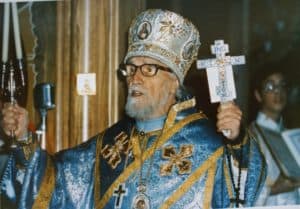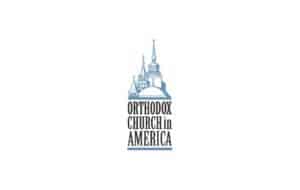In memory of Archbishop John of Chicago & Minneapolis
On the Fortieth Year Anniversary of His Falling-Asleep
Forty years is a long time. Many who will be reading this were not yet born when Archbishop John died. Since that time, five bishops have been at the helm of the Diocese of the Midwest. Much has changed during that space of time. Yet the impact of Archbishop John’s diocesan administration was substantial and is still discernable. However, as years have gone by and as many of those who worked with him have passed away, his contributions to the Orthodox Church in America and the diocese are not as well known as they should be.
He was the ruling bishop of the Diocese of the Midwest for almost thirty years, if we count from the time he was “Bishop of Cleveland and Detroit” in 1952. When he became “Bishop of Chicago” in 1956, “Cleveland and Detroit” were incorporated into the “Diocese of Chicago and Minneapolis.” He lived at the Holy Trinity Cathedral Rectory until 1973 when he relocated to the Diocesan Center which we then in Burr Ridge. Retiring in 1978, he spent the last years of his life between his small “datcha” in Camp Lake, Wisconsin and with Fr. Sergei and Matushka Alexandra Garklavs, in the rectory of St. Panteleimon Church, Argo-Summit, IL. It was there, early on Palm Sunday morning, April 11, 1982, after saying his morning prayers in front of the Tikhvin Icon of the Theotokos, that he sat down on the couch in the living room to read the Akathist to the Guardian Angel. At some point, he leaned his head back, closed his eyes and “fell asleep.” When my father woke, he saw the Archbishop sitting on the couch and at first thought he was resting. It was a prayed-for Christian ending of life.
“Home is where one starts from,” so said T.S. Eliot. For Archbishop John, his “home” from his childhood was the Church, and so his death in a rectory next to a church on the Feast of the Entrance of Christ into Jerusalem, had all the marks of a well-deserved and glorious “homecoming.” Between his birth in Latvia, in 1898 and death in America in 1982, there was a life of contrasts and challenges, journeys and adventures, war and peace, exodus and exile, emigration and immigration, service and vocation, priesthood and episcopacy, and through it all, a love of God, of people, of work, of family and of life itself. He was born to poor Latvian Orthodox farmers, in as humble circumstances as could be. Never denying or forgetting those dismal beginnings, through hard work, dedication, patient effort and fortitude, he became a person of noble character and cultured sensibilities, comfortable with both the lowly and the elite. He was, as in the words of a prayer, “compassionate and patient, willing to listen and care, and courageous and diligent, able to speak and to share.”
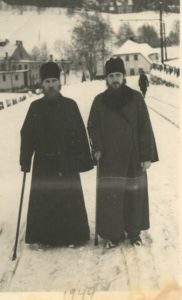 Although he was an ethnic Latvian he was born in what was then the Russian Empire, and that combination of factors formed in him a comfortable identity that he bore with pride and dignity all his life. He lost his father while still a boy. His mother was a woman of strong faith and instilled in him Christian ethics and religious devotion as practiced in the Orthodox Tradition. After serving in the Russian Army during the First World War, he returned to his native village to help his mother and assist at the Orthodox parish as Psalm-Reader and Choir Director. Not having sufficient funds to pay for a seminary education, he worked in a tailor’s shop, a skill he enjoyed later in life, doing needlepoint and sewing for recreation and practical purposes.
Although he was an ethnic Latvian he was born in what was then the Russian Empire, and that combination of factors formed in him a comfortable identity that he bore with pride and dignity all his life. He lost his father while still a boy. His mother was a woman of strong faith and instilled in him Christian ethics and religious devotion as practiced in the Orthodox Tradition. After serving in the Russian Army during the First World War, he returned to his native village to help his mother and assist at the Orthodox parish as Psalm-Reader and Choir Director. Not having sufficient funds to pay for a seminary education, he worked in a tailor’s shop, a skill he enjoyed later in life, doing needlepoint and sewing for recreation and practical purposes.
After studies at the Riga Orthodox Seminary he was already in his thirties when ordained to the priesthood in 1936. The period between wars was a tumultuous time in the Latvian Orthodox Church. For several years he was a travelling priest, covering three country parishes, and also working on the side to make ends meet. When the Germans began their assault on the Eastern Front in 1941, the need for pastoral care dramatically escalated. Wartime miseries precipitated a real thirst for spiritual comfort. In addition to the local Orthodox, thousands of refugees fleeing Russia came to the Baltics. An urgent need arose for a bishop to oversee the pastoral needs in the Latvian Church. In this chaotic and unstable situation, it fell to the humble, celibate country priest, John Garklavs, to take up the challenge. His unassuming background, one would think, were not qualities of a capable administrator. In fact, he became just that. Although his tenure as Bishop of Riga was short-lived, his episcopal ministry was put to the test during five complicated years of displacement in post-war Germany. When he came to the United States in 1949, he joined what was then the Russian Orthodox Greek-Catholic Church of North America, the “Metropolia” as it was called. At that time there were no real diocesan structures as the entire Metropolia was in effect one, large diocese. Upon his appointment to Chicago, he saw as his mission the formation of a healthy diocesan structure. Under his initiative and direction the Diocese of Chicago and Minneapolis developed, with departments, committees and programs, becoming the fully-functioning ecclesiastical body known today as the Diocese of the Midwest.
 There are several episodes in Archbishop’s life that could provide material for a thrilling movie, full of actions, dangers and suspense. Among those, the story of his becoming caretaker of the Tikhvin Icon of the Theotokos stands out. The Icon’s journey is an epic tale, from its confiscation from Tikhvin by the German Army in 1941, its association with the miraculous Pskov Mission during World War II, its being brought by the Germans to Latvia, five years of uncertain wandering through war-torn Europe, to the final arrival in America in 1949. Archbishop John first met the Tikhvin Icon when he welcomed it to the Orthodox Cathedral in Riga. Becoming the Icon’s faithful steward for almost forty years, he often had to bear disparagements and tolerate difficulties. The Icon itself inspired him to preserver with courage and wisdom. Throughout his life Vladyka had a deep veneration for the Theotokos who was his guide, intercessor, and protector; a fact confirmed by his wish to be buried in blue vestments.
There are several episodes in Archbishop’s life that could provide material for a thrilling movie, full of actions, dangers and suspense. Among those, the story of his becoming caretaker of the Tikhvin Icon of the Theotokos stands out. The Icon’s journey is an epic tale, from its confiscation from Tikhvin by the German Army in 1941, its association with the miraculous Pskov Mission during World War II, its being brought by the Germans to Latvia, five years of uncertain wandering through war-torn Europe, to the final arrival in America in 1949. Archbishop John first met the Tikhvin Icon when he welcomed it to the Orthodox Cathedral in Riga. Becoming the Icon’s faithful steward for almost forty years, he often had to bear disparagements and tolerate difficulties. The Icon itself inspired him to preserver with courage and wisdom. Throughout his life Vladyka had a deep veneration for the Theotokos who was his guide, intercessor, and protector; a fact confirmed by his wish to be buried in blue vestments.
He regarded his immigration to the United States as divine providence and was grateful to this country, becoming a citizen in 1964. He came to love Chicago and he loved Holy Trinity Cathedral. Archbishop John, who never drove a car, became a regular in the Cathedral’s Humboldt Park neighborhood. In his day, the area had a sizeable Eastern European population and he felt quite at home walking down Division Street to do his shopping, getting to know the various merchants by name. He especially enjoyed the Russian-Turkish Baths which were in easy walking distance. And he got familiar with getting around Chicago on the CTA, making occasional trips to the Loop.
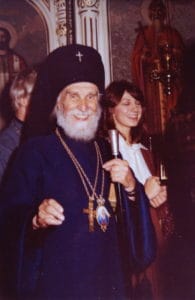 Although he appreciated the New World to which God brought him, Vladyka’s personal affections were for the Old World’s customs and traditions. He had a great love for Orthodox worship, for the liturgical services, traditions, customs, and a special affection for liturgical singing. The fullness of Orthodox Church life was for him, “life itself.” His celebration of the Hierarchical Divine Liturgy, when it had the proper complement of priests, deacons, subdeacons, servers and a good choir, was an unforgettable experience. For the Archbishop Orthodox services were a visible manifestation of Orthodox theology, tradition and culture coming alive in real time in majestic celebration. When not officiating at the altar, he himself would stand at the Cathedral’s kliros to sing and read with whoever else was present. Those who saw him serve were always struck by his bearing and appearance; he was fastidious about detail, disciplined in execution, and mindful that the form and content of the services always had to convey both beauty and meaning. Throughout the diocese his visitations to parishes were always grand affairs and many remember those fondly to this day. At times his liturgical manner gave the impression of a strictness, which gave some altar boys a bit of trepidation. But as young servers got to know him, they came to see that his affection for liturgy was conveyed to people as well. He was eager to meet and encourage young servers who might have a priestly vocation and several of them eventually were ordained and are still serving in this diocese and elsewhere.
Although he appreciated the New World to which God brought him, Vladyka’s personal affections were for the Old World’s customs and traditions. He had a great love for Orthodox worship, for the liturgical services, traditions, customs, and a special affection for liturgical singing. The fullness of Orthodox Church life was for him, “life itself.” His celebration of the Hierarchical Divine Liturgy, when it had the proper complement of priests, deacons, subdeacons, servers and a good choir, was an unforgettable experience. For the Archbishop Orthodox services were a visible manifestation of Orthodox theology, tradition and culture coming alive in real time in majestic celebration. When not officiating at the altar, he himself would stand at the Cathedral’s kliros to sing and read with whoever else was present. Those who saw him serve were always struck by his bearing and appearance; he was fastidious about detail, disciplined in execution, and mindful that the form and content of the services always had to convey both beauty and meaning. Throughout the diocese his visitations to parishes were always grand affairs and many remember those fondly to this day. At times his liturgical manner gave the impression of a strictness, which gave some altar boys a bit of trepidation. But as young servers got to know him, they came to see that his affection for liturgy was conveyed to people as well. He was eager to meet and encourage young servers who might have a priestly vocation and several of them eventually were ordained and are still serving in this diocese and elsewhere.
Archbishop John’s conception of liturgy was not a superficial affection for external ritual. His understanding of Orthodox Church life and liturgy was “sacramental,” by which I mean that he saw that liturgy and traditions were the means by which the Church was the haven of healing, making broken people whole. He was trained in the classic Russian Orthodox theological tradition which placed prominence on the Church’s “ustav,” the liturgical regulations as spelled out in the Typicon. But his pastoral vision was not static. He understood that pastoral and liturgical practices would have to be adjusted for people living in modern times. He supported the translation of liturgical texts into English, and he made the efforts to learn enough English, it being his fourth language, after Latvian, Russian and German. He welcomed changes in Eucharistic practices which encouraged laity to receive Holy Gifts regularly and not just once a year. His love of the Orthodox Church’s traditions and his vision of pastoral life were inspirational, and influenced many to love God and serve the Church.
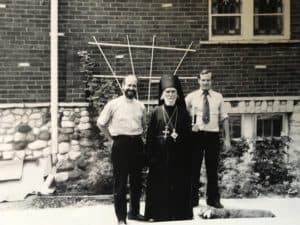 As an Orthodox bishop he was exemplary, observing the traditions required of his office, following proper decorum, fasting strictly as prescribed by the Church, praying and reading the Scriptures daily, immersing himself in the writings of the Fathers, and in general being a model of episcopal conduct. However Vladyka had qualities which were not ecclesiastical in nature but enhanced his life as bishop and as person. He had a public side which was light-hearted and easy-going. He was warm and welcoming, making friends easily, offering consolation and affection to countless people. He exemplified traditional Orthodox hospitality, himself enjoying cooking and entertaining. With unassuming wit and a sense of humor, guests, old and new friends, were always comfortable in his presence. He enjoyed participating at Church conventions or gatherings because it brought him in contact with people. His faltering English in no way held him back from conversations and socializing. On festive occasions he would encourage singing of liturgical hymns or folk songs, leading with his sonorous melodic voice. There was also a family dimension. About this all that needs to be said here is that he was for my siblings and myself the only real grandfather we had. He fulfilled that role with grandfatherly love, attention and support, and we in turn, loved him as only a doting grandfather can to be loved.
As an Orthodox bishop he was exemplary, observing the traditions required of his office, following proper decorum, fasting strictly as prescribed by the Church, praying and reading the Scriptures daily, immersing himself in the writings of the Fathers, and in general being a model of episcopal conduct. However Vladyka had qualities which were not ecclesiastical in nature but enhanced his life as bishop and as person. He had a public side which was light-hearted and easy-going. He was warm and welcoming, making friends easily, offering consolation and affection to countless people. He exemplified traditional Orthodox hospitality, himself enjoying cooking and entertaining. With unassuming wit and a sense of humor, guests, old and new friends, were always comfortable in his presence. He enjoyed participating at Church conventions or gatherings because it brought him in contact with people. His faltering English in no way held him back from conversations and socializing. On festive occasions he would encourage singing of liturgical hymns or folk songs, leading with his sonorous melodic voice. There was also a family dimension. About this all that needs to be said here is that he was for my siblings and myself the only real grandfather we had. He fulfilled that role with grandfatherly love, attention and support, and we in turn, loved him as only a doting grandfather can to be loved.
Archbishop John was 84 years old when he died. Measured in years, his life was long, filled with many events and people. His life can also be measured by challenges and accomplishments, of which there were many. But in the end, his life must be measured by his being a real Christian. For Vladyka this meant being an Orthodox Christian, a man who from his youth sought to love and please God by word and deed, and to love neighbors as himself. By that measure, Archbishop John fulfilled his life in excellent fashion, leaving the Church an inspiring legacy and for us a wonderful example of an Orthodox Christian.
Fr. Alexander Garklavs
April 10, 2022

